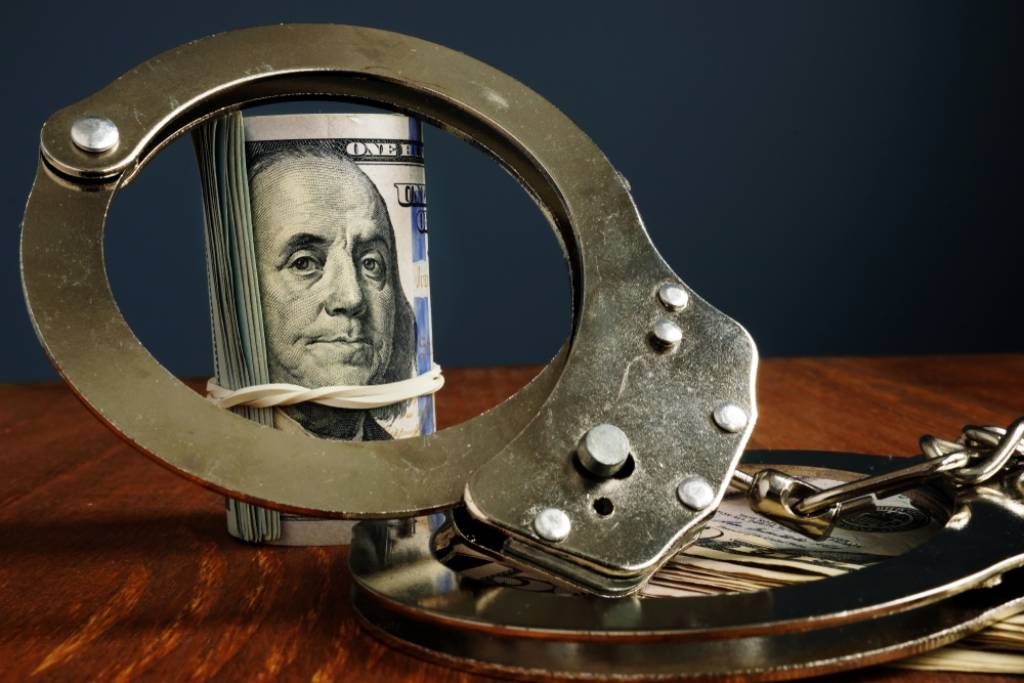
In California, bail amounts are determined by various factors – including the crime committed. Below, we go over how bail is calculated in California, and what defendants might pay depending on the crime.
What Is Bail?
Bail is a sum of money defendants can pay to be released from jail pending trial. In exchange for release, though, the defendant must adhere to certain bail conditions.
If the defendant violates their bail conditions, the judge can issue a bench warrant for their arrest. The bail paid will be forfeited unless it’s reinstated – contact us immediately if you need help with bail bonds reinstatement.
How Is the Bail Amount Determined in California?
Bail amounts are normally determined by what’s called a “bail schedule”. A bail schedule lists the bail amounts depending on the crime committed. Crimes are listed as felonies, misdemeanors, or infractions.
Every state has its own bail schedule. And typically, bail amounts vary by county. So, a defendant in Orange County may pay more or less bail than a defendant in San Francisco for the same crime.
What Percentage of the Bail Amount Do You Pay?
In California, to get a bail bond, you normally pay 10% of the full amount to an agency. This percentage can change, though – there is some discretion. Our experienced bail bond team can explain what percentage you may pay depending on your case.
Do Judges Have Discretion in Setting Bail Amounts in California?
Yes. Although there’s a bail schedule, judges can raise or lower bail according to Section 1275 of the California Penal Code. Judges might consider, for example, the defendant’s prior criminal record, the danger they present to the public, and the types of injuries inflicted (if any).
Now let’s take a look at bail amounts by crime in California, starting with misdemeanors.
Misdemeanors
Bail for misdemeanors is normally less than bail for felony offenses. Here are some examples.
- Labor code violations: $250
- Unspecified county ordinance violations: $250
- Unspecified “straight” misdemeanors: $500
- “Wobbler” offenses: $750
If there’s a fine payable, and it’s more than the minimum bail, the bail should be raised. For example, if bail is $500 but the fine is $750, bail should be set at $750.
Unlisted and Minor Infractions
Minor infractions are less serious than misdemeanors, so the bail amounts are usually lower. Bail for unlisted or minor infractions is usually around $35 (unless there’s a fine payable and it’s more than this).
Assault
The bail amount for assault depends on various factors, including:
- Whether it’s a felony or misdemeanor charge
- If there are aggravating circumstances e.g. assault with a weapon
The bail for misdemeanor assault in LA, for example, is $20,000+. However, it’s $25,000 if there’s assault with a firearm.
Felony assault is more serious. Bail amounts can be exceptionally high. As an example, in OC, bail is $100,000,000 for assault with attepts to commit sexual crimes during a burglary.
Domestic Violence
The bail amount for domestic violence in California depends on the level of charges.
For example, bail may be $20,000 for misdemeanor domestic battery, or lower for less serious charges. But it could be $100,000 or more for serious charges e.g. spousal rape.
DUI
The DUI bail amount in California varies by county. In Los Angeles, for example, it’s $5,000, which is an average amount. Bail for a DUI is higher for aggravating factors e.g. a DUI with license revocation.
Possession
Bail for possession can be as low as $250 for having drug paraphernalia. However, felony possession charges can result in bail in excess of $5,000,000 for high-level offenses.
Speeding Tickets
The bail amount for speeding tickets in California depends on how far you drive over the speed limit. For example, if the base fine for your speeding ticket is $35 due to driving 10mph over, your bail, when adding court fees, becomes over $200.
Restraining Order Violations
Violating a protective order, such as a restraining order, can result in steep bail amounts as it’s considered a contempt of court. In LA, bail is $20,000 for contempt of court.
Bail may be higher or lower depending on the facts of the case e.g. if there are aggravating factors.
Theft and Burglary
Bail for petty theft may be set around $1,000, whereas burglary could mean bail amounts of $5,000 or more. The bail amount increases depending on the nature of the offensed e.g. the base bail amount for automobile theft in LA is $35,000.
Exceptions to Bail Amounts
Bail amounts in California are not set in stone. Here are some examples of when the bail value might increase.
- The defendant already has a criminal record.
- There are multiple charges against the defendant.
- The defendant committed crimes while already on bail.
On some occasions, you may be released “on your own recognizance”, meaning you won’t pay any bail. On the other hand, in some serious cases, the judge will not grant bail at all.
Can Bail Be Reduced in California?
It’s possible, yes. A criminal defense lawyer may be able to show that bail should be reduced. It all depends on the facts of your specific case.
You should seek legal advice if you need help with bail amounts or your courtroom appearances.
Get Bail Bonds From Bail Hotline
Cash bail can be expensive. If you need bail bonds in California, Bail Hotline can help. We’re open 24/7 to get you bail bonds when you need them, whether you’re a defendant or family member. To connect with bail bond agents in your area, or to get help posting bail, contact us now.